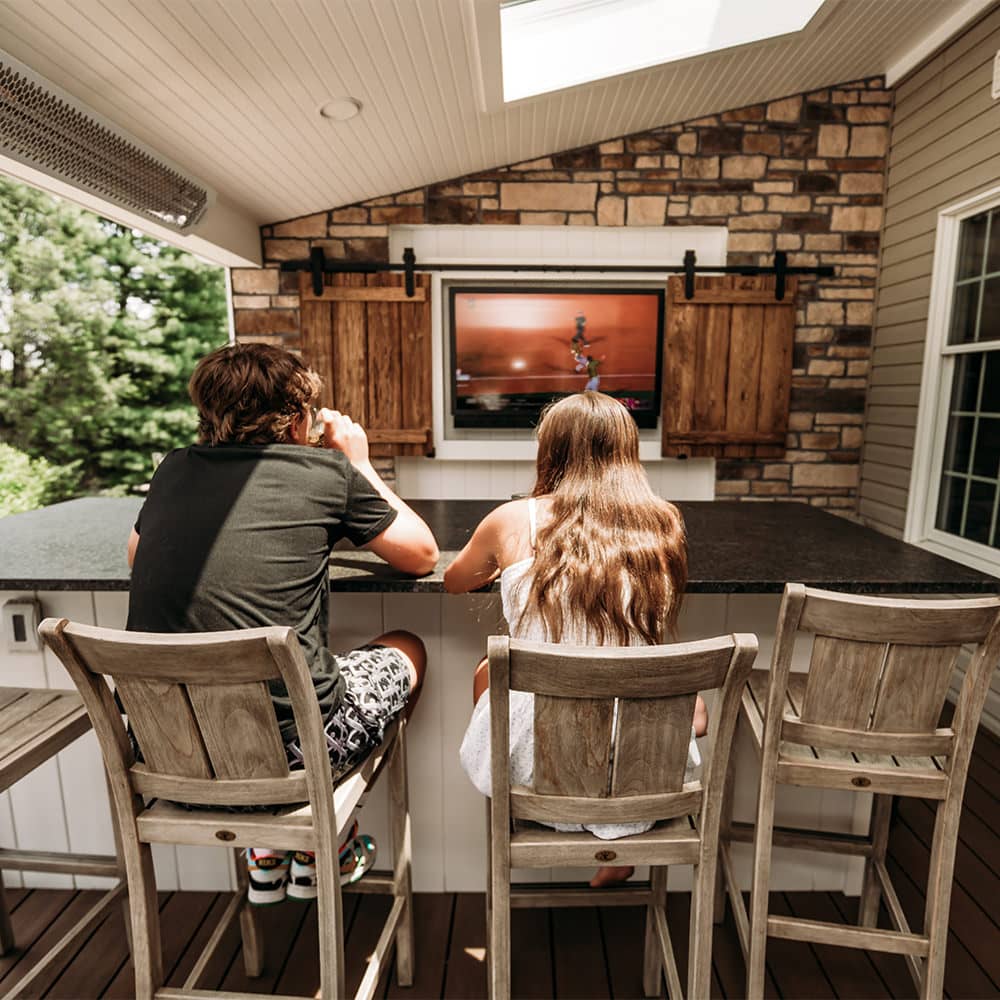Landscape Spotlight: Iris
Posted May 25, 2017 in Blog, Plant and Tree
Charming, elegant, delicate, romantic, beautiful, enchanting…the list of adjectives describing the look, feeling and overall reception of the iris flower could stretch as long as Santa’s list. However, there is more to the iris than just a pretty face! Whether you prefer the vibrancy of the Caesar’s Brother variety or the more delicate Japanese varieties, this flower provides textural and vertical interest within the garden, but did you know that its roots are steeped in history?
Greek Mythology and Beyond
For those who have studied Greek mythology, might remember that the Goddess of the Rainbow is named Iris, which was the goddess of sea and sky and who was also the messenger of the Olympian gods. As namesake of the goddess, the delicate yet dutiful nature can be found within the garden and splendidly scattered throughout a more modern history, starting with the French influence of the fleur de lys symbol.

Art Influence
They say that art is in the eye of the beholder, but it is undeniable that flowers play, or at 
Garden Application
While I bet my bottom dollar that none of us have a $53 million dollar iris painting hanging in our home…I will bet that same bottom dollar that a majority of us do have the unfolding layers of epic splendor in our gardens and landscapes. When the iris buds finally decide to open in “late” spring, after the tulips and daffodils fall away, a paradise of intricate design exposes in a host of colors to dazzle the eye. Being famously easy to grow lends a hand to this flower’s garden popularity. As a perennial that likes to multiply horizontally, a few years down the line, your simple row of iris bulbs will become a lush and sprawling mat of spectacular flowers and fans of leaves.
Keep in mind, that when your flower colonies get to be too much, it is time to divide the bounty. Don’t be intimidated if your thumb is anything less than green. Dividing irises is quite simple and should be done after the blooms fade for the season. Simply dig up the mass of roots per plant, cut the bulbs apart with a sharp knife or pair of sheers, separate and replant in other areas of the property. The transplanted irises will have time to recover in their new location over the rest of the summer and fall, ready to start their color show again in the spring!
Varieties Perfect for NEPA

Siberian Iris: Specifically the “Caesar’s Brother” iris is a velvety-rich deep purple classic with a yellow and white blaze and black veining throughout. Reliable, trouble-free and a sturdy champion within the landscape, this variety will bloom profusely in early summer and the tall foliage will remain perfectly lovely until frost.
Bearded Iris: The palette for bearded iris contains almost 

Louisiana Iris: Thriving in the same conditions as the 

No matter which variety of iris you choose to include in your landscape, you can rest assured that these beauties are easy to care for and will be outstanding performers for many years to come! Formal settings or informal meanders are all complimented just the same with these dramatic pops of color, and you will find that they will create their own work of art within your landscape.
- MasterPLAN Landscape Design has an extensive background low-maintenance plantings and we are eager to share our knowledge! If your property seems a little lackluster or doesn’t seem to have that certain wow-factor, reach out to us at MasterPLAN. Specializing in backyard transformations custom-tailored for you and your family, we guarantee that your new outdoor living spaces will seamlessly blend beauty and function. If you would like to discover the full-potential for your property and uncover the backyard of your dreams, reach out to MasterPLAN! When you are ready to chat, we are ready to listen.
Join Our Newsletter
Stay up to date with what is happening with MasterPLAN Outdoor Living.

Carefully crafted outdoor living spaces take all elements of a design into consideration, down to the details of every cabinet handle!

MasterPLAN can help design and install your perfect pool and surrounding outdoor living space in the Lehigh Valley through the Main Line of Philadelphia!

With careful design and planning, an outdoor living space can be beautiful and include several desired features without feeling cramped or overwhelming.

When selecting outdoor furniture, make sure you are selecting pieces that can withstand our ever-changing weather and that don’t compete with the space itself. This is timeless beauty.

Dry under-deck systems provide added lounge and entertainment areas to your outdoor living plan. Read more about this Limerick, PA project!

An outdoor living space that looks and feels like an extension of your home is proven to be utilized and enjoyed for more months of the year than initially expected!

Strategically placed skylights in your outdoor living space will allow natural light to flood back into your home. This eliminates the cave-like effect so many worry about when wanting an attached roof system.

These outdoor infrared Bromic heaters are subtle in sight but very present in function. They provide an even flow of warmth to the bar area as well as the family’s dining table for a more comfortable and enjoyable day.

No matter the weather, this family in Bethlehem can enjoy their favorite activities on their beautiful covered deck!





